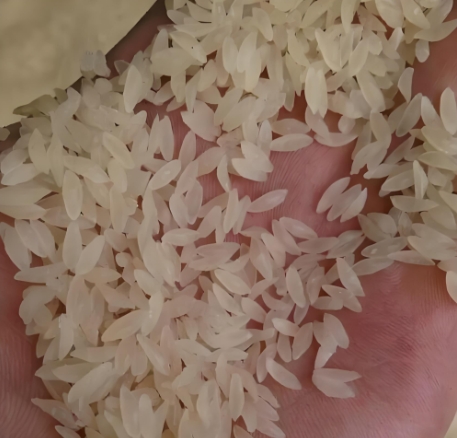How is Fortified Rice Produced? A Look at the Manufacturing Process
Fortified rice is designed to combat malnutrition by adding essential vitamins and minerals to regular rice, which is a staple food for over half the world’s population. The goal is to provide crucial nutrients without altering the rice’s familiar taste, texture, or cooking properties.
Producing fortified rice is not as simple as coating ordinary rice grains. It involves creating a special fortified “kernel” that is blended with regular rice. Here’s a breakdown of the primary production methods.
1. The Core Concept: Rice Kernels
The most common and effective method does not involve fortifying every single grain. Instead, a small portion of regular rice grains (usually 0.5% to 2%) is transformed into Fortified Rice Kernels (FRKs). These FRKs are engineered to contain a high concentration of vitamins and minerals.
These kernels are then blended with regular rice at a specific ratio (e.g., 1:100 or 1:200). Because the FRKs are designed to look, taste, and cook like normal rice, consumers cannot tell them apart, ensuring they receive the nutritional benefits with every meal.
2. Primary Production Methods
There are three main techniques for producing the fortified rice kernels:
a) Hot Extrusion (Most Common Method)
This is the most widely used method, particularly for large-scale public distribution programs.
- Process:
- Raw Material: Rice flour is first obtained by milling regular rice.
- Mixing: The rice flour is mixed with a precise blend of micronutrients (a “premix”)—typically containing Iron, Folic Acid, Vitamin B12, Vitamin A, and Zinc.
- Dough Formation: Water and sometimes a binding agent are added to form a dough.
- Cooking & Extrusion: The dough is cooked and then forced through an extruder. The extruder uses a die that shapes the dough into grains that resemble real rice.
- Drying: The extruded “rice kernels” are dried to a moisture level similar to regular rice (around 10-12%), making them shelf-stable and suitable for blending.
- Advantages: Produces very hard and durable kernels that withstand washing and cooking. Excellent nutrient stability.
- Disadvantage: Higher initial investment cost for machinery.
b) Cold Extrusion
This method is similar but does not involve the same level of cooking during the extrusion process.
- Process: The dough of rice flour, nutrients, and water is forced through a die at room temperature to form the grains. These grains are then dried and subsequently steamed or baked to fully cook them.
- Advantage: Lower energy costs than hot extrusion.
- Disadvantage: The kernels may be less hard and nutrients like Vitamin A can be less stable.
c) Powder Coating
This method involves coating the surface of regular rice grains with nutrients.
- Process:
- Regular rice grains are placed in a large drum.
- A nutrient powder mix and usually an edible coating (like waxes or gums) are added.
- The drum is tumbled, ensuring an even coating on each grain.
- The coating is sealed to the grain to prevent dusting off.
- Advantage: Lower cost and simpler technology.
- Disadvantages:
- Nutrients can be lost if the rice is washed before cooking (a common practice in many cultures).
- The coating can alter the taste and appearance if not done perfectly.
- Less durable during transportation and storage.
3. The Micronutrient Premix
The choice of nutrients is critical. A typical premix includes:
- Iron: Crucial for preventing anemia. The type of iron used (e.g., ferric pyrophosphate) is chosen because it is white, doesn’t change the color of the rice, and doesn’t cause a metallic taste.
- Folic Acid & Vitamin B12: Essential for brain development and preventing neural tube defects in newborns.
- Vitamin A: Supports vision and immune function.
- Zinc: Boosts immune system and growth.
The nutrients are added in amounts slightly above the Recommended Dietary Allowance (RDA) to account for potential losses during storage and cooking.
4. The Blending Process
The final and crucial step is blending the FRKs with regular rice. This is done using industrial blenders that ensure a completely homogeneous mix. The standard blending ratio is 1:100 (one kilogram of FRKs for every 99 kg of regular rice). Sophisticated equipment is used to achieve this precise mix; improper blending can lead to an uneven distribution of nutrients.
5. Quality Control and Testing
Stringent quality control is vital throughout the process:
- The premix is tested for potency.
- The finished FRKs are tested for nutrient content, shape, size, and hardness.
- The final blended rice is tested to ensure the mixing ratio is correct and the nutrients are evenly distributed.
Conclusion: A Technical Solution to a Global Challenge
Producing fortified rice is a sophisticated food engineering process designed to deliver “invisible” nutrition. By creating specially engineered kernels that blend seamlessly with ordinary rice, this technology offers a highly effective, cost-efficient, and culturally acceptable way to reduce micronutrient deficiencies in large populations, making it a powerful tool in the global fight against “hidden hunger.”








